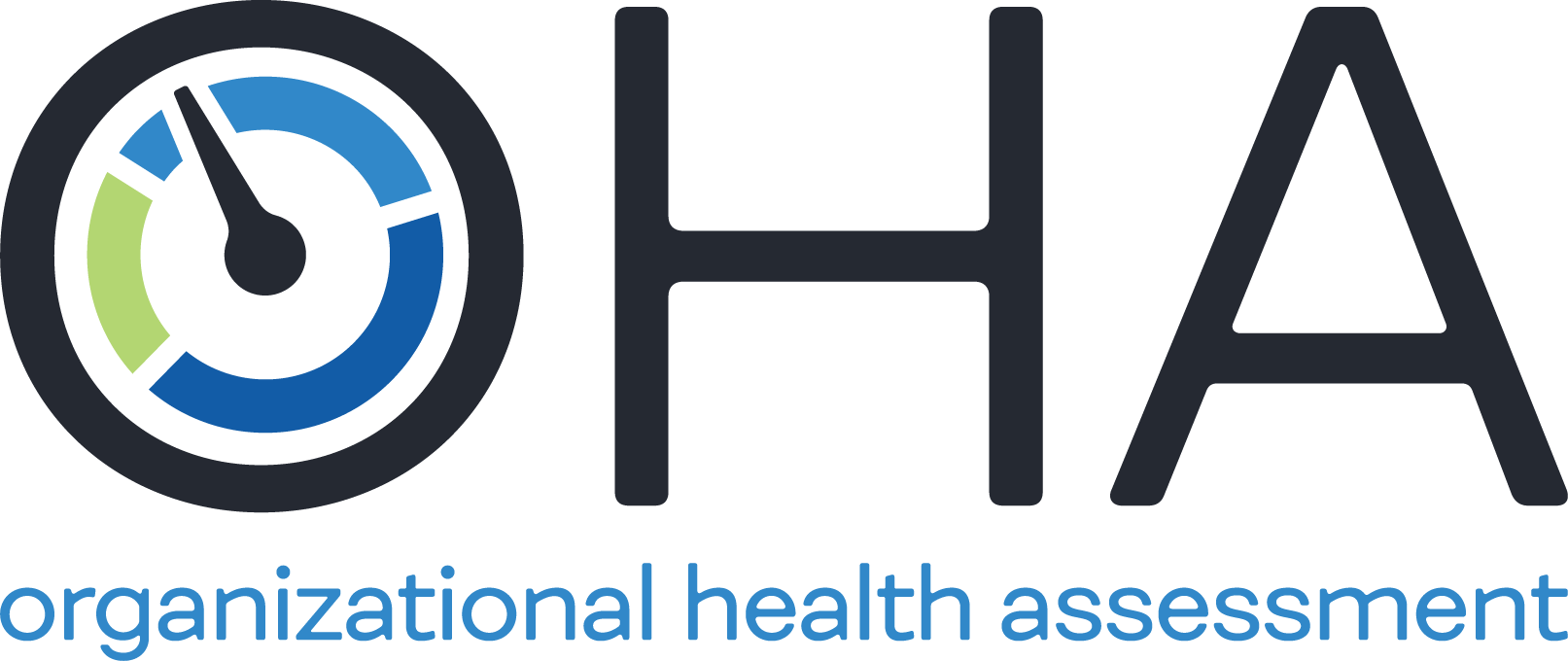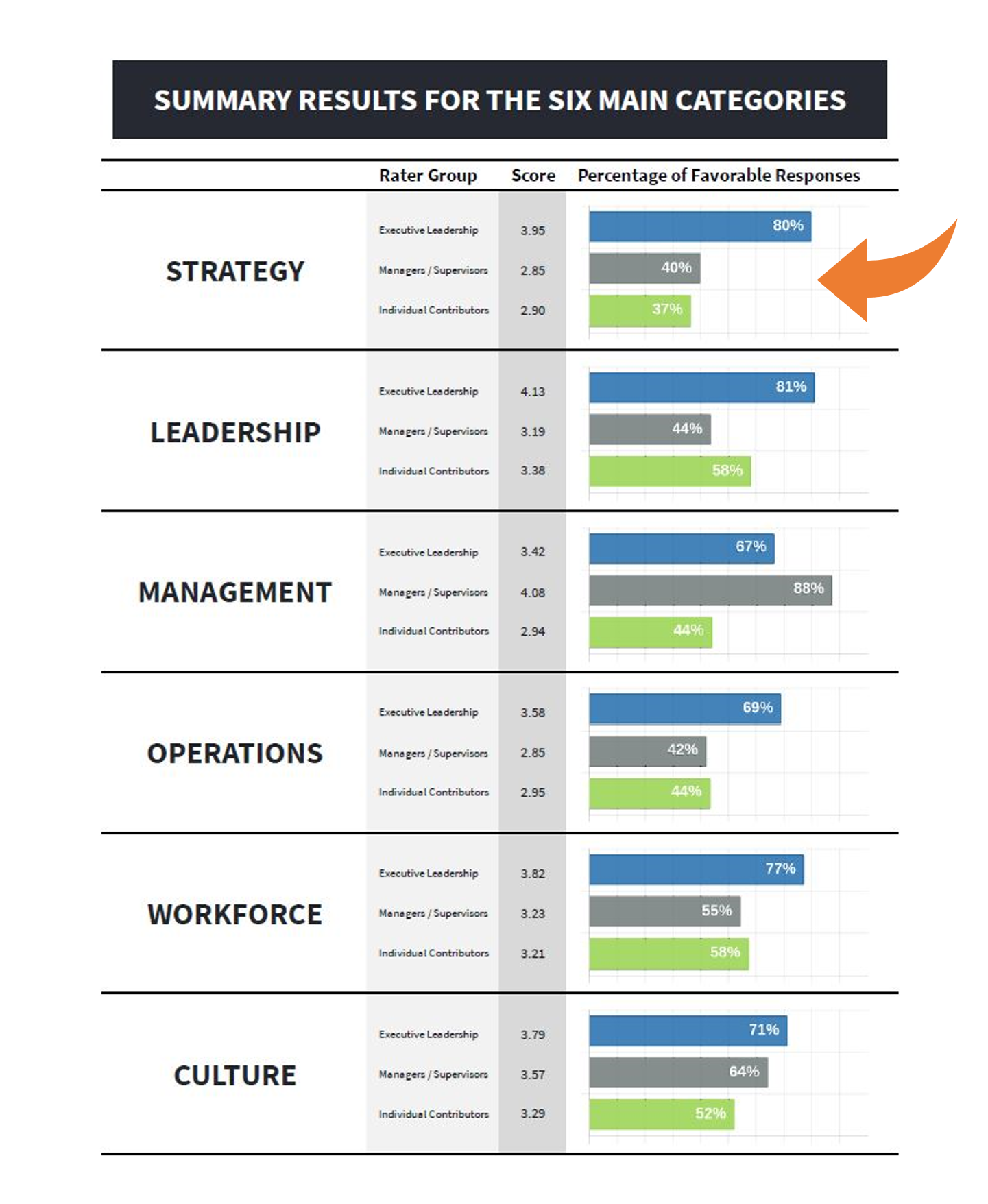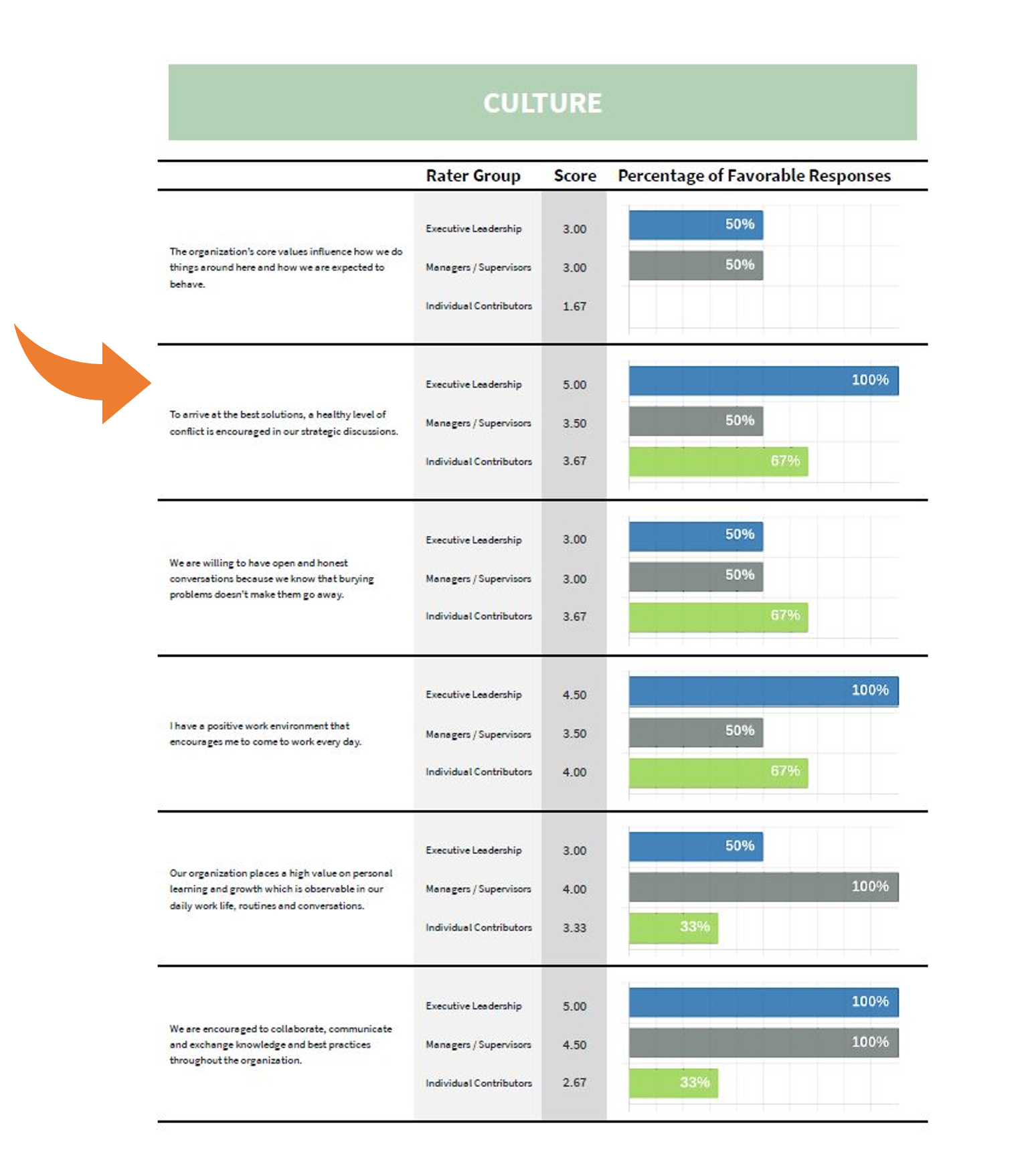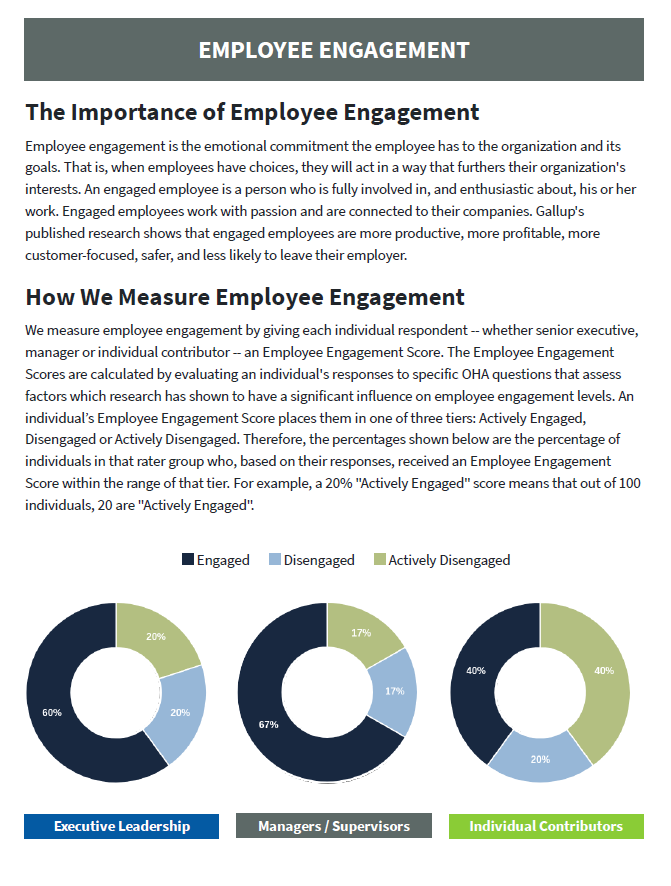
The proprietary Organizational Health Assessment (OHA) measures organizational health and performance across six main categories: strategy, leadership, management, operations, culture, and workforce. Within each category the assessment examines several specific competencies that research has shown to be vital to the success of healthy and high-performing organizations.

Strategy
- Strategic Clarity
- Strategy Development Practices
- Communication of Strategy
- Execution of Strategy
- Evaluation of Strategy (Measurement, Accountability)
- Strategic Alignment (Cascading Goals and Objectives)
Operations
- Strategic Alignment
- Continuous Improvement
- Efficiency and Effectiveness
- Roles and Responsibilities
- Practices and Standards
- Resource Allocation
- Service Delivery
Management
- Communication of Strategy
- Modeling
- Coaching
- Decisive and Action-Oriented
- Performance and Accountability
- Trust and Confidence
- Competency
- Empowerment
- Career Development Assistance
Leadership
Senior Leaders:
- Decisiveness
- Modeling
- Communication
- Culture Shaping
- Commitment to Values
- Motivating (Inspiration, Innovation)
Culture
- Influence of Values
- Description of Culture (Current and Desired)
- Healthy Conflict
- Work Environment
- Collaboration
Workforce
- Purpose
- Autonomy
- Mastery
- Appreciation
- Special Section: Employee Engagement

Accurate and Actionable Information at Your Fingertips

User-friendly, online assessment
- Results may be segmented and displayed in multiple ways: by organization or division, as well as from senior leadership, management, and staff perspectives.
- Reflects the best and most recent industry research and best practices in strategy development and implementation, cultural health, organizational performance, leadership, team development, and employee engagement.

Increased visibility into the current health and performance of your organization
Continuity Consulting's Organizational Health Assessment (OHA) captures employee perceptions, evaluates key aspects of an organization's health and performance, establishes clear baselines for measuring progress, and provides valuable input into your planning and improvement initiatives. It offers:
- Online dashboard helping you set baselines for measuring progress.
- Recommendations based on expertise, experience, and best practices.
- Practical solutions focused on true root causes allowing you to prioritize opportunities to catalyze change in your organization's performance.
- Valuable input to your strategic planning, performance improvement or transformation initiatives or project team.

Provides clear, actionable results
- Will sometimes confirm the leader's intuition.
- Will often expose and clarify previously unknown strengths and weaknesses.
- Always provides the leader with confidence in moving forward.
Take action with data-driven confidence
Since results are displayed separately for Executive Leaders, Manager/Supervisors, and Individual Contributors, you can identify where gaps exist between perceptions of Executive Leaders and those of Managers and Individual Contributors.

To provide you with an overall pulse of the organization, the OHA Report provides an overview Summary Results page for the six main categories.
Since results are displayed separately for Executive Leaders, Manager/Supervisors, and Individual Contributors, you can identify where gaps exist between perceptions of Executive Leaders and those of Managers and Individual Contributors.

The six main categories scores are broken down question-by-question to provide you with the data you need to develop specific plans that address the areas that are impacting performance.
Special Section: Employee Engagement
Engaged employees are more productive, more customer-focused, and less likely to leave their employer.
The OHA measures employee engagement for senior executives, managers, and individual contributors based on individual responses to question topics found throughout the assessment that are known factors that influence engagement.
